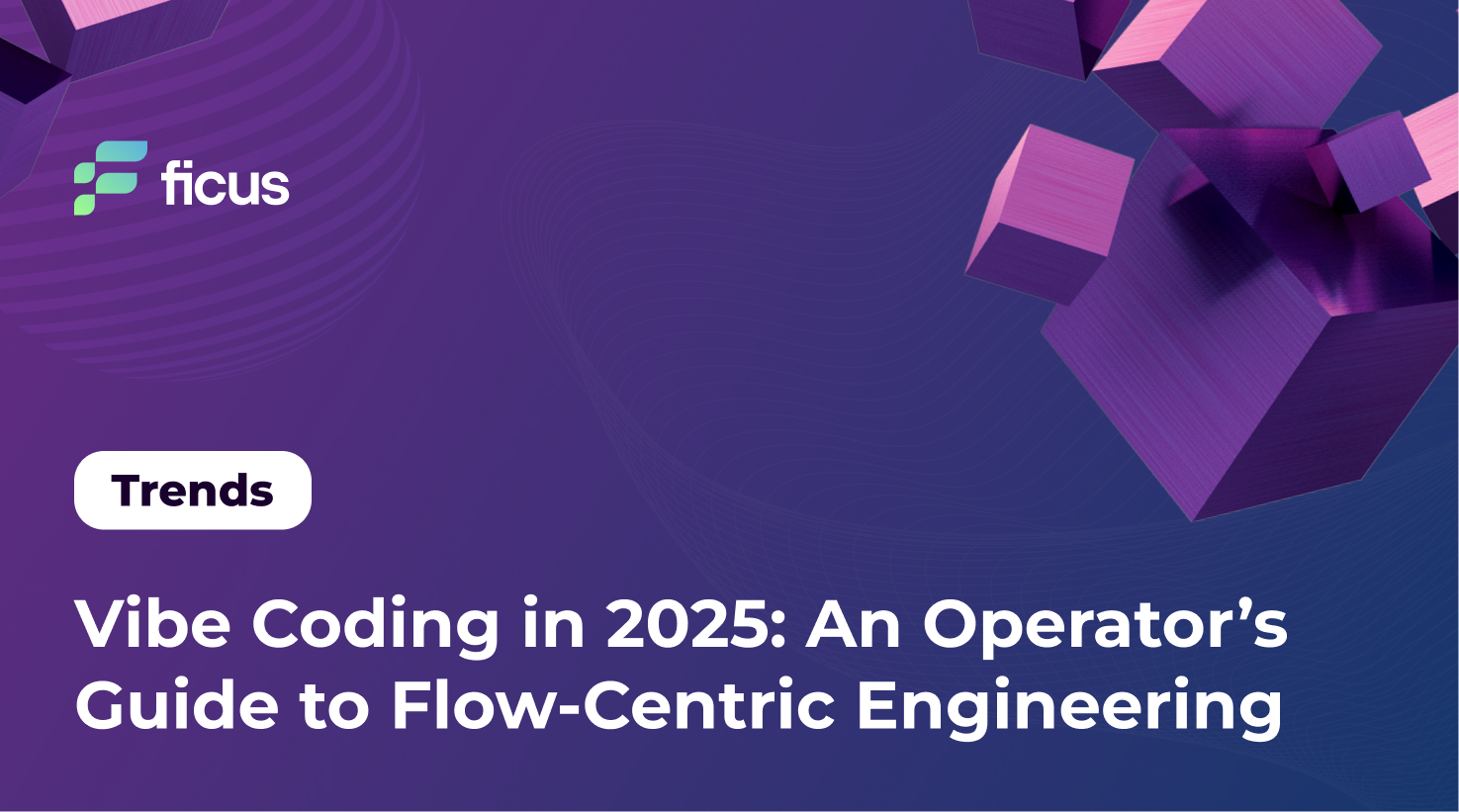A big change has occurred with the incorporation of AI for UX design, which combines technology with the artistic process of creating user experiences. This combination improves the relationship between consumers and digital products while streamlining design processes. Understanding and satisfying user wants is the fundamental objective of UX design. As AI becomes increasingly integrated into design processes, it takes on a deeper significance that guarantees technology complements human interaction rather than replacing it.
- AI enhances UX/UI design with personalized, adaptive user experiences.
- Automation through AI tools accelerates design processes, improving efficiency.
- Understanding AI’s capabilities is essential for innovative, user-centered design.
Why Use AI in UX Work?
An effective way to automate repetitive processes, including studying user behavior or forecasting future trends, is to integrate AI tools for UX design. Thanks to this automation, UX experts have more time to concentrate on perfecting the final product. AI makes it possible to create predictive models from user data, improving digital goods’ relevance and personalization beyond mere efficiency. AI expands the toolkit available to UX designers. Still, it does not reduce the need for human empathy and understanding, which remain at the heart of creating engaging and effective user experiences.

Benefits of Using AI for UX Design
AI for UX design changes how designers approach their job, making it more perceptive and effective. This change improves the breadth of design exploration while simultaneously streamlining repetitive operations. The next sections explore this integration’s many advantages and highlight how it has affected the UX industry.
Enhanced Personalization
The use of AI for UX design allows you to achieve a level of personalization that meets the growing expectations of consumers for a personalized user experience. With 71% of consumers feeling frustrated if a website is not customized, UX designers have the challenge of adapting their designs to different user groups. Using artificial intelligence for UX design simplifies this task, allowing designers to create various designs that meet different audiences’ needs quickly. AI’s mastery of personalization is evident in platforms like Amazon and Netflix, which offer personalized experiences, making each user feel uniquely valued and increasing engagement and satisfaction.
Improved Design Usability
The use of AI for UX design is changing the way designers approach usability. By automating the collection and analysis of data, AI platforms enable data-driven designs tailored to user behavior and preferences. This technology simplifies the development of user personas and customer experience planning, allowing for accurate prediction of user interaction. In addition, AI’s ability to conduct A/B testing by generating and evaluating design variations ensures that the design resonates with the target audience. The result is advanced design solutions that significantly improve the user experience by directly targeting user needs and behaviors.
Better Accessibility
AI for UX design is revolutionizing the process of creating accessible designs by eliminating the need for manual research and testing of users with disabilities. Artificial intelligence quickly identifies accessibility gaps in design by evaluating content and visuals for universal understanding. In addition, AI tools for UX design extend their usefulness by offering practical solutions, such as generating alternative text options, converting text to audio, improving the visibility of images, and including captions and transcriptions for multimedia content. This approach ensures inclusive design, making digital experiences accessible to a wider range of users with different needs.
More Effective Testing and Validation
Using AI for UX design significantly improves product testing, allowing you to analyze large amounts of data and create test cases more efficiently than manual methods. Machine learning ensures that no platform aspect is overlooked, unlike potential mistakes that QA engineers can make. In addition, the best AI for UX design technologies improves testing processes by eliminating unnecessary test cases and focusing efforts on the most relevant ones. This optimized approach produces more accurate results, optimizing time and financial investments during testing and validation.
Design is the silent ambassador of your brand.
Paul Rand
How AI in UX Design Can Revolutionize Product Development
Artificial intelligence has revolutionized product development in UX design, thanks in part to:
- AI for UX design chatbots offers personalized assistance, swiftly converts sketches into mockups, and enhances user interaction.
- Artificial intelligence applications diligently analyze user data to provide actionable design recommendations.
- These tools create user prototypes, pinpointing needs, and pain points for targeted design solutions.
- Artificial intelligence advises on design elements such as color schemes, typography, and images, ensuring aesthetic appeal and functional consistency.
- By using AI for UX design, professionals can focus more on innovation and creativity, as AI handles repetitive analytical tasks, pushing the boundaries of traditional design practices and opening up new horizons for product development.
Ways to improve UX design with AI
Transform Your Design Process with AI – Dive In Now!
Contact UsHow can AI tools for UX design improve and enhance the user experience while maintaining the important human factor that users value? Introducing artificial intelligence into UX design workflows allows us to deepen our understanding of user needs, optimize processes, and provide more personalized and effective solutions. Let’s examine the different ways AI can improve UX design by balancing automated efficiency and personalization.
Analyze large volumes of user data
UX designers now use AI for UX design to bypass the cumbersome task of manually analyzing user data. AI technologies quickly process huge amounts of data, identifying behavioral patterns and predicting user needs. This instantaneous insight forms a solid foundation for improving the product experience, enabling quick proof of concepts and focusing on effective design solutions. Tools such as DataRobot use predictive analytics to optimize design, while Research AI identifies trends for strategic planning. Hotjar AI does an excellent job of processing survey responses, making using AI for UX design indispensable for improving usability and achieving a more intuitive user experience.
Optimize design prototyping and testing
Improving UX functionality through design prototyping and testing can significantly increase website conversions, with studies showing that it can increase by 400%. AI for UX design improves this stage by simulating extended user interactions creating prototypes that accurately reproduce real user behavior. Uizard applies machine learning to transform sketches into fashionable, functional prototypes. Fronty easily converts images into HTML and CSS code, turning static layouts into interactive websites. Meanwhile, Mockitt AI predicts user actions, creating prototypes and wireframes to anticipate user needs and demonstrate the best AI for UX design.
Improve UX and product copy
Combining functional interfaces and effective copy in UX design significantly improves user orientation. Tools within AI for UX design make it easier to create effective UX content, which is especially useful for teams that don’t have specialized copywriters. These programs recommend words that match user behavior and profiles, directly improving comprehension and engagement. Contexta ensures text uniformity in UX content using an AI-generated text database. Unbounce Smart Copy generates persuasive content to increase conversions, and Copy.ai uses natural language processing to create compelling product descriptions and calls to action. These achievements demonstrate how UX design for AI directly contributes to an improved user experience.
Increase design accessibility
Bringing artificial intelligence into UX design can significantly improve accessibility, eliminating a common oversight in creating products suitable for people with disabilities. By employing AI for UX design, services such as voice recognition, text resizing, color adjustments, and alternative text for images align with brand empathy and respect for customer diversity. AccessiBe streamlines navigation with a screen reader and keyboard, UserWay helps you comply with WCAG 2.1 AA standards with a coding assistant trained in digital accessibility, and Khroma develops color schemes for better readability, which directly impacts user inclusivity and broadens the appeal of your service.
Customize the user journey
Adaptive interfaces and personalized content created using AI for UX design significantly increase customer retention and attract new users. Advanced UX design tools make tailoring the user experience to meet different needs easier. Pendo AI specializes in customizing the interface with timely connectivity and support, while Algolia improves the user experience by dynamically adapting search results and content. Dynamic Yield further personalizes the browsing experience by changing layouts according to individual user preferences, increasing user engagement and sales revenue.
Decrease design bias
Bias in UX design affects usability and perpetuates stereotypes, making products seem exceptional. AI for UX design solves this problem by detecting and correcting design and user experience bias, promoting inclusivity. Google Fairness Indicator evaluates machine learning algorithms for bias, ensuring the design satisfies all user groups equally. MonkeyLearn uses sentiment analysis to detect content bias, and Acrolinx offers AI-powered content management, ensuring that language and design are inclusive. These tools work together to create balanced and universal UX solutions.
Enhance UI design
AI for UX design tools is indispensable for UX designers who lack dedicated resources, as they allow you to create visually appealing interfaces that embody your brand identity and provide an engaging user experience. Adobe Sensei offers a rich selection of icons and fonts, anticipating the style needs of your brand. Fontjoy uses deep learning to create harmonious font combinations that resonate with your brand. Colormind uses user data to create color schemes that appeal to your audience and increase engagement. These tools demonstrate how UX design for AI can significantly improve the aesthetics and functionality of an interface.
Streamline team efficiency and productivity
To improve workflows, UX design teams use AI for UX design, significantly increasing productivity and creativity. For example, FigJam AI automates the creation of design templates and simplifies brainstorming, freeing up time for more creative tasks. Brainpool AI reduces manual effort when creating wireframes and resizing images using user data to make automatic adjustments. Synthesia.io lets you quickly create videos from texts or scripts, offering multiple languages and avatars. These innovations demonstrate how UX design for AI transforms team collaboration and efficiency, allowing designers to focus on innovation.
Top Tools for Using AI in UX Design
What are the best AI tools for UX design that can revolutionize your workflow and significantly improve design quality? Finding and applying the best AI tools will help you improve your UX workflow, speed up your processes, and achieve great results. Here’s a look at the leading AI solutions transforming UX design and their unique features and benefits.
Chat GPT

Leveraging AI for UX design, ChatGPT provides a multifaceted platform that helps designers generate content based on text prompts. This feature allows you to create design inspiration, user research ideas, and accessibility solutions. In addition, it supports UX designers in developing engaging content for digital interfaces, including UI text, product descriptions, and learning bullet points. Using ChatGPT, designers can ensure their content is informative and engaging, improving the user experience and demonstrating the growing synergy between UX design for AI and user engagement strategies.
Midjourney

Midjourney is one of the transformative AI tools for UX design that allows designers to create and modify images with AI-driven features quickly. It simplifies image editing tasks such as resizing, cropping, and color correction. Unique features such as background removal make it easier to highlight elements in images, and text and shape insertion options extend its capabilities, offering a comprehensive set to enhance visual content with efficiency and simplicity.
Marvel AI

Marvel AI is a collaboration and prototyping tool that offers seamless integration with various UX design resources, including Iconscout, Logo Lab, and Unsplash. These integrations provide designers the support they need to create icons and logos and find premium graphics directly from Marvel’s user-friendly platform. This interaction allows you to optimize the creative process, where using artificial intelligence tools increases the quality and efficiency of design. Marvel AI is an example of how UX design for AI can improve the design workflow, allowing designers to focus on innovation and user engagement.
InVision

InVision is a modern UX design platform UX design for AI that enables more than 2 million users worldwide to develop interactive prototypes efficiently. It allows designers to create clickable versions of their projects for thorough testing and convincing client presentations. In addition, InVision facilitates real-time collaboration between designers by sharing the screen and creating animations and transitions. Compatibility with major design tools such as Sketch and Photoshop enhances its usefulness, making it the best choice for professionals looking to improve their work and share it effectively.
AutoDraw

AutoDraw is changing UX design for AI by democratizing the creation of visuals with an AI-powered design platform. With intuitive AI tools and templates, users can quickly create custom visuals without any drawing skills. The platform facilitates individual creativity and supports project teamwork, providing a simplified design process. AutoDraw makes complex design accessible, allowing you to quickly create visually appealing content tailored to the specific needs of your project.
How to Use AI in UX Design
Want to learn how to use AI for UX design? The key is to master the art of creating effective prompts. Thanks to AI tools like ChatGPT and Midjourney, you’ll learn how to clearly express your design needs, which can change how you look at design tasks. In this chapter, you’ll learn how to optimize your interaction with AI to get the most out of these powerful tools.
Provide Ample Context
In UX design for AI, emphasizing the importance of context in your prompts transforms the usefulness of AI. When interacting with AI tools, detailed context – such as user personas, tasks, and the environment in which the design will be used – greatly increases the relevance and accuracy of the results. Providing detailed information allows AI to tailor its responses to specific project requirements accurately. This ensures the development of innovative UX designs is closely aligned with user expectations and requirements, resulting in a more effective and engaging user experience.
Ask for Multiple Options
Using AI for UX design to create multiple drafts quickly solves the blank screen problem, providing a basis for further improvement. Asking AI to create different iterations of a document or design- three or five different versions- is a powerful strategy for improving ideas and productivity. This approach turns AI output into a starting point, greatly simplifying editing. It leverages AI’s ability to facilitate a wide range of ideas, making the creative process more efficient and diverse.
Iterate on the Output
Using AI for UX design requires continuous improvement, implementing an iterative approach that improves results. AI’s initial results should be viewed as drafts, not final products. Techniques such as accordion editing, where the length of the AI-generated text changes dynamically, and apple picking, where certain elements are selected from the AI’s responses to guide the next prompt, are crucial to fine-tuning the AI’s output. Users can significantly improve the relevance and quality of AI-generated content for their UX projects through experimentation and gradual adjustments.
Build a Prompt Library
Creating a library of tips is an effective strategy for making the best AI for UX design, simplifying the process of getting consistent, high-quality results. By cataloging tips that have previously produced successful results, designers can speed up the creation process, especially for repetitive UX tasks. This repository reduces repetitive efforts and serves as a valuable source for exploring alternative approaches when the first attempts do not meet expectations. Such a library becomes an individual resource that increases the efficiency and effectiveness of using AI in UX design projects.
Final Words
Introducing AI tools for UX design paves the way for a future where digital experiences are more personalized, intuitive, and engaging. Thanks to advanced AI algorithms, we are moving towards a world where applications understand and adapt to user preferences, behavior, and context, providing a personalized experience. This evolution marks a monumental shift in how we interact with the digital environment, paving the way for interfaces that are not only smart but also deeply empathetic.
Ficus Technologies is ready to help businesses navigate these changes by leveraging advanced AI technologies to create unparalleled digital experiences. Don’t hesitate to contact us if you want to innovate and captivate your audience with cutting-edge UX/UI design.
Yes, artificial intelligence technologies capable of creating user interface designs do exist. These AI systems use machine learning and artificial intelligence to create design mockups, suggest improvements, and even predict user needs. Tools such as Adobe Sensei, Figma’s Designer, and Sketch2Code use AI to optimize the design process, automate repetitive tasks, and provide intelligent suggestions. They can analyze large amounts of data to understand design trends, optimize user interfaces to improve the user experience, and generate design elements based on specified parameters. Such AI tools are revolutionizing the work of designers by making the design process faster, more efficient, and increasingly intuitive.
Artificial intelligence does not replace UX design but transforms it. AI integrates with UX design to improve the design process by offering tools that automate tasks, provide data-driven insights, and personalize the user experience. While AI can generate designs and predict user preferences, the creative and empathetic aspects of UX design remain purely human. Designers are using AI to increase efficiency and effectiveness, but strategic decision-making, understanding human emotions, and creative problem-solving in design still require a human touch. Thus, AI is a powerful assistant in the UX design process, not a replacement for human designers.u003cbru003e








